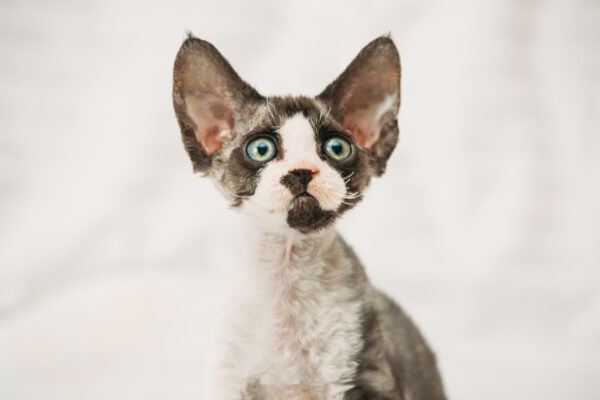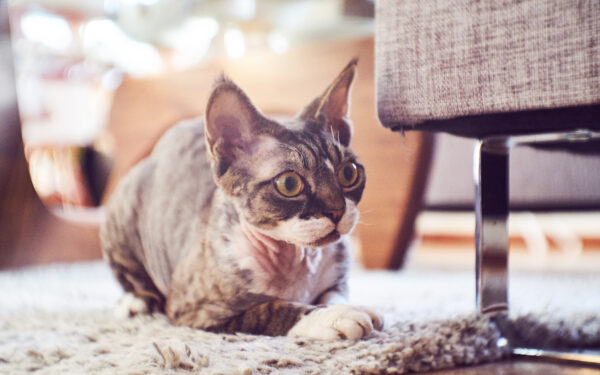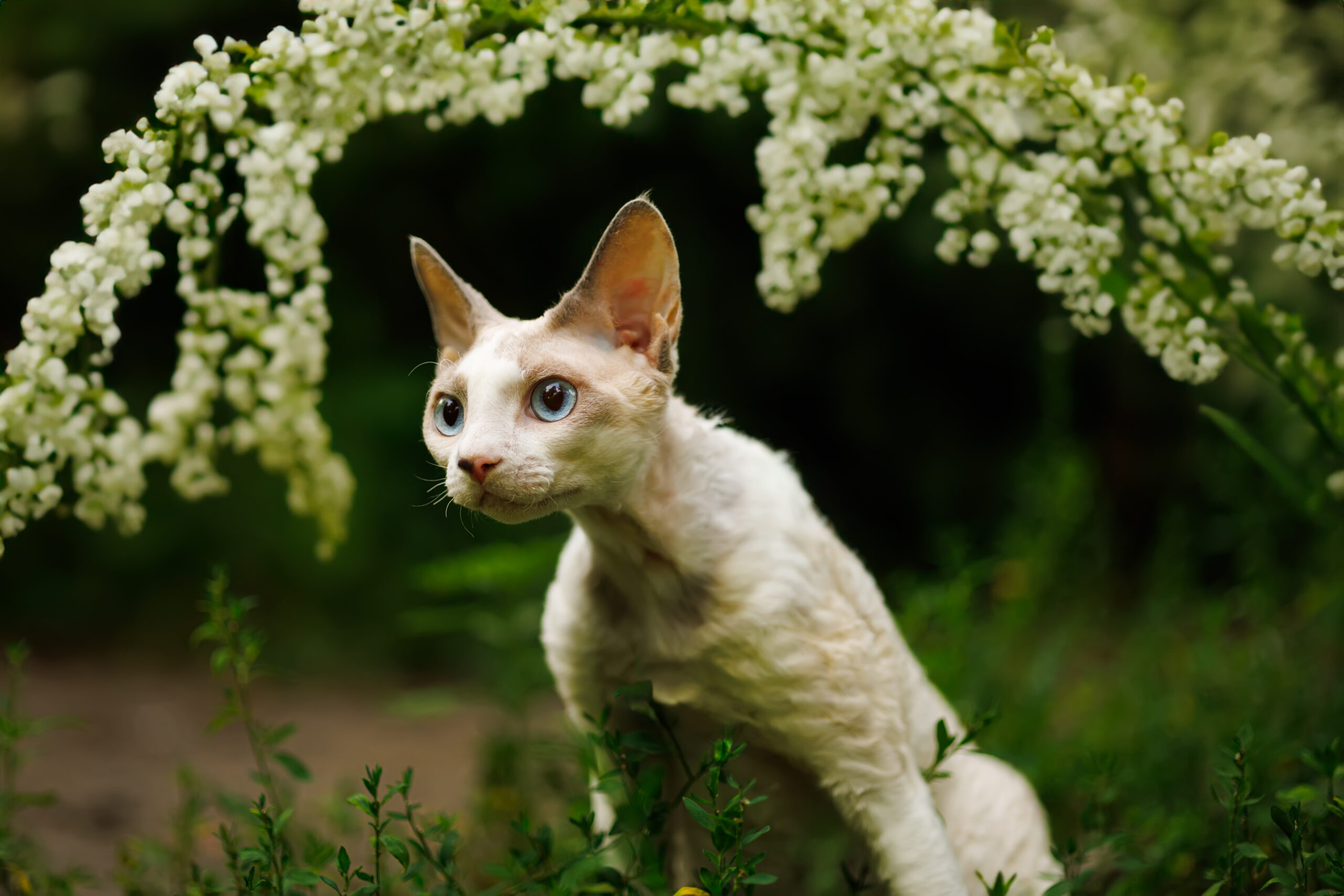p { font-size: 18px; }
The Cornish Rex cat, with its distinctive curly coat and playful personality, is a breed that stands out in the feline world. This comprehensive guide delves into everything you need to know about the Cornish Rex—from its unique history and physical characteristics to its lively temperament and specific care requirements. Whether you’re a seasoned cat owner or considering your first feline companion, this guide provides valuable insights to help you understand, care for, and cherish this extraordinary breed.
Table of Contents
- 1. History and Origin of the Cornish Rex Cat
- 2. Physical Characteristics
- 3. Personality and Temperament
- 4. Health and Lifespan
- 5. Care and Maintenance
- 6. Nutrition and Diet
- 7. Training and Socialization
- 8. Cornish Rex Cats as Family Pets
- 9. Adoption and Breeding
- 10. Case Studies and Statistics
- 11. Comparison with Other Breeds
- 12. Frequently Asked Questions
- 13. Conclusion
1. History and Origin of the Cornish Rex Cat

1.1 The Accidental Discovery
The Cornish Rex breed originated from a natural genetic mutation that occurred in a litter of kittens born on July 21, 1950, in Cornwall, England. A tortoiseshell and white farm cat named Serena gave birth to five kittens, one of which had an unusual curly coat and slender body. This male kitten, named Kallibunker, became the foundation of the Cornish Rex breed (Cat Fanciers’ Association, n.d.).
1.2 Establishing the Breed
Recognizing the uniqueness of Kallibunker, his owner, Nina Ennismore, consulted a geneticist who advised her to breed him back to his mother to preserve the mutation. This pairing produced more curly-coated kittens, confirming the recessive nature of the gene responsible for the breed’s distinctive features (PetMD, n.d.).
1.3 International Recognition
The Cornish Rex was introduced to the United States in the 1950s, where breeders worked to expand the gene pool by crossing them with Siamese, Russian Blues, and American Shorthairs. By the 1960s, the breed gained recognition from major cat associations, including the Cat Fanciers’ Association (CFA) and The International Cat Association (TICA) (TICA, n.d.).
2. Physical Characteristics

2.1 Distinctive Curly Coat
The most notable feature of the Cornish Rex is its soft, wavy coat, which lacks the typical guard hairs found in other cats. This results in a silky, plush texture often described as similar to crushed velvet. The coat forms tight curls, especially on the back and tail (Cornell Feline Health Center, n.d.).
2.2 Elegant Body Structure
Cornish Rex cats have a slender, muscular body with long legs and a naturally arched back. Their heads are egg-shaped with high cheekbones, a Roman nose, and large ears set high on the head. Their eyes are medium-sized and can be any color, often correlating with their coat color.
2.3 Coat Colors and Patterns
The breed comes in a wide variety of colors and patterns, including solid, tabby, calico, and pointed. All coat colors are accepted in breed standards.
2.4 Size and Weight
Cornish Rex cats are medium-sized, with males typically weighing between 8 to 10 pounds and females between 5 to 7 pounds. They have a graceful, athletic appearance.
3. Personality and Temperament

3.1 Playful and Energetic
Cornish Rex cats are known for their playful, kitten-like behavior that lasts well into adulthood. They are energetic and enjoy climbing, jumping, and interactive play.
3.2 Affectionate and Social
These cats are highly sociable and form strong bonds with their human companions. They often seek out attention and enjoy being involved in family activities. Cornish Rex cats are known to follow their owners around the house and may even ride on shoulders.
3.3 Intelligent and Curious
Their intelligence and curiosity make them quick learners. They can be trained to perform tricks and enjoy games that challenge their minds, such as puzzle toys.
3.4 Vocalization
Cornish Rex cats are moderately vocal and use a soft, chirping voice to communicate their needs and desires.
4. Health and Lifespan

4.1 Common Health Issues
While generally healthy, Cornish Rex cats are predisposed to certain health conditions:
- Hypertrophic Cardiomyopathy (HCM): A heart condition characterized by thickening of the heart muscle (Payne et al., 2010).
- Patellar Luxation: A condition where the kneecap dislocates from its normal position.
- Hypotrichosis: A genetic disorder leading to hair loss.
- Sunburn: Due to their thin coat, they are susceptible to sunburn and should be protected from excessive sun exposure.
4.2 Lifespan
The average lifespan of a Cornish Rex cat ranges from 12 to 16 years, with proper care and nutrition contributing to longevity.
4.3 Preventative Health Care
Regular veterinary check-ups are essential for early detection of health issues. Annual screenings, including heart evaluations and orthopedic assessments, are recommended.
4.4 Genetic Testing
Responsible breeders conduct genetic testing to minimize the risk of hereditary diseases. When adopting a Cornish Rex, inquire about the health history and any genetic tests performed.
5. Care and Maintenance
5.1 Grooming Needs
The Cornish Rex’s short, curly coat requires minimal grooming. Weekly gentle brushing with a soft bristle brush or hand stroking helps remove loose hairs and distributes natural oils. Over-bathing can strip oils and dry out the skin; bathe only as necessary.
5.2 Nail and Dental Care
Trim their nails every two to three weeks. Provide scratching posts to maintain claw health. Regular dental care, including brushing and dental treats, helps prevent periodontal disease.
5.3 Ear and Skin Care
Check their ears weekly for wax buildup or signs of infection. Clean gently with a vet-approved ear cleaner. Monitor their skin for any signs of irritation or sunburn, especially if they spend time near windows with direct sunlight.
5.4 Environmental Enrichment
Cornish Rex cats are active and require stimulation. Provide climbing trees, perches, and interactive toys. Regular play sessions are important for their physical and mental well-being. For a selection of quality pet toys and accessories, visit Flawless Cuties.
5.5 Travel Considerations
If you travel frequently or plan to take your cat on trips, consider investing in travel essentials to ensure their comfort and safety.
6. Nutrition and Diet
6.1 Dietary Requirements
A high-quality, balanced diet rich in protein supports their active lifestyle. Essential nutrients include:
- Protein: For muscle development and energy.
- Taurine: Essential for heart and eye health.
- Omega Fatty Acids: Promote healthy skin and coat.
- Vitamins and Minerals: Support overall health and immune function.
6.2 Feeding Guidelines
Due to their high metabolism, Cornish Rex cats may require more calories than other breeds. Divide their daily food allowance into multiple small meals to maintain energy levels.
6.3 Hydration
Ensure fresh water is always available. Some cats prefer running water; consider a pet water fountain to encourage hydration.
6.4 Special Dietary Considerations
Monitor for any food sensitivities or allergies. Consult your veterinarian for personalized dietary recommendations, especially if your cat has specific health concerns.
7. Training and Socialization
7.1 Litter Box Training
Cornish Rex cats are typically easy to litter train. Provide a clean, accessible litter box and maintain cleanliness to encourage consistent use.
7.2 Behavioral Training
Use positive reinforcement techniques to teach commands and discourage undesirable behaviors. Their intelligence makes them responsive to training.
7.3 Socialization
Early socialization with different people, pets, and environments helps them become well-adjusted adults. They are naturally sociable and adapt well to new situations.
7.4 Enrichment Activities
Engage them with interactive toys, agility training, and puzzle feeders. Teaching them tricks can provide mental stimulation and strengthen your bond.
8. Cornish Rex Cats as Family Pets
8.1 Compatibility with Children
Their playful and gentle nature makes Cornish Rex cats excellent companions for children. They enjoy interactive play and are patient with respectful handling.
8.2 Interaction with Other Pets
They generally get along well with other cats and cat-friendly dogs. Their sociable disposition makes them suitable for multi-pet households.
8.3 Adaptability to Living Environments
Cornish Rex cats adapt well to various living situations, including apartments and houses. They are indoor cats but appreciate space to climb and explore.
8.4 Emotional Needs
They thrive on companionship and may become lonely if left alone for extended periods. Consider adopting a pair of Cornish Rex cats or ensuring they have company during the day.
9. Adoption and Breeding
9.1 Choosing a Reputable Breeder
If purchasing from a breeder, ensure they adhere to ethical practices:
- Provide health clearances and genetic testing results.
- Allow you to visit their facility and meet the kittens’ parents.
- Offer a health guarantee and a return policy.
- Do not release kittens before 12 weeks of age.
Consult resources like TICA’s breeder directory for reputable breeders.
9.2 Adoption Opportunities
Consider adopting from shelters or rescue organizations. Many Cornish Rex cats and mixes are in need of loving homes. Adoption fees often include vaccinations and spaying/neutering.
9.3 Ethical Considerations
Responsible breeding practices prioritize the health and welfare of the cats. Avoid breeders who:
- Cannot provide health documentation.
- Keep cats in poor conditions.
- Have multiple litters available at all times.
- Pressure you into a quick sale.
9.4 Spaying and Neutering
Spaying or neutering your cat is important to prevent unwanted litters and reduce the risk of certain health issues.
10. Case Studies and Statistics
10.1 Popularity Rankings
The Cornish Rex is a unique breed that has gained a dedicated following. According to the Cat Fanciers’ Association, it is among the top 20 registered breeds (CFA, n.d.).
10.2 Health Studies
A study published in the Journal of Feline Medicine and Surgery examined the prevalence of patellar luxation in Cornish Rex cats, highlighting the importance of orthopedic evaluations (Loder & Todhunter, 2010).
10.3 Longevity Data
Data indicates that Cornish Rex cats have a median lifespan of 14 years, with many living beyond 16 years when provided with proper care (Loder & Todhunter, 2010).
10.4 Behavioral Observations
Studies show that Cornish Rex cats score high in activity level and sociability, making them suitable for active households seeking an engaging pet.
11. Comparison with Other Breeds
| Characteristic | Cornish Rex | Devon Rex | Sphynx |
|---|---|---|---|
| Origin | England | England | Canada |
| Coat Length | Short and Curly | Short and Wavy | Hairless (Fine Down) |
| Distinctive Features | Curly Coat, Egg-shaped Head | Wavy Coat, Elfin Face | Hairless, Wrinkled Skin |
| Personality | Active, Affectionate | Playful, Mischievous | Social, Energetic |
| Average Lifespan | 12-16 years | 9-15 years | 8-14 years |
| Activity Level | High | High | High |
| Grooming Needs | Low | Low | High (Skin Care) |
12. Frequently Asked Questions
Q1: Are Cornish Rex cats hypoallergenic?
A: While no cat is completely hypoallergenic, Cornish Rex cats may be better tolerated by some allergy sufferers due to their unique coat, which sheds less dander.
Q2: Do Cornish Rex cats require special grooming?
A: Their short, curly coat requires minimal grooming. Weekly brushing and occasional baths are usually sufficient.
Q3: How active are Cornish Rex cats?
A: They are highly active and playful, requiring regular exercise and mental stimulation.
Q4: What is the cost of a Cornish Rex kitten?
A: Prices vary depending on factors like pedigree and breeder reputation. Typically, Cornish Rex kittens range from $800 to $1,500 USD. Always purchase from a reputable breeder.
Q5: Are Cornish Rex cats good with children and other pets?
A: Yes, their friendly and sociable nature makes them excellent companions for children and other pets.
Q6: Do Cornish Rex cats need protection from the sun?
A: Yes, due to their thin coat, they are susceptible to sunburn and should be protected from excessive sun exposure.
Q7: Can Cornish Rex cats be left alone during the day?
A: They prefer companionship and may become bored if left alone for long periods. Provide toys and consider a companion pet if you are frequently away.
Q8: Do Cornish Rex cats get cold easily?
A: They have less insulation due to their coat and may seek warmth. Providing cozy bedding and keeping your home at a comfortable temperature is important.
13. Conclusion
The Cornish Rex cat is a breed that offers a unique combination of elegance, intelligence, and affectionate companionship. Their playful nature and distinctive appearance make them a delightful addition to any household. By understanding their needs and providing proper care, you can ensure a happy, healthy life for your Cornish Rex cat. For all your pet care needs, including premium toys, grooming supplies, and accessories tailored for your Cornish Rex, visit Flawless Cuties, your trusted partner in pet care.
I Don’t Want to Hit My Dog, But I Want Them to Obey – What Should I Do? Here’s How to Train Your Dog PositivelyThe Best Homemade Dog Food Recipes: A Comprehensive GuideTop 10 Best Dog Breeds for Apartments: A Comprehensive GuideObedience Puppy Training: A Step-by-Step GuideCan I Pet That Dog? A Comprehensive Guide to Safe and Enjoyable Interactions
References
- Cat Fanciers’ Association. (n.d.). Cornish Rex Breed Profile. Retrieved from https://cfa.org/cornish-rex/
- Cornell Feline Health Center. (n.d.). Cornish Rex Cat Breed. Retrieved from https://www.vet.cornell.edu/…/cornish-rex-cat
- Loder, R. T., & Todhunter, R. J. (2010). The demographics of patellar luxation in cats registered with the Orthopedic Foundation for Animals. Journal of Feline Medicine and Surgery, 14(2), 152-157. doi:10.1016/j.jfms.2009.11.008
- Payne, J. R., Brodbelt, D. C., & Luis Fuentes, V. (2010). Cardiomyopathy prevalence in 780 apparently healthy cats in rehoming centres (the CatScan study). Journal of Veterinary Cardiology, 12(3), 155-162. doi:10.1016/j.jvc.2010.05.005
- PetMD. (n.d.). Cornish Rex. Retrieved from https://www.petmd.com/cat/breeds/c_ct_cornish_rex
- The International Cat Association (TICA). (n.d.). Cornish Rex Breed. Retrieved from https://tica.org/cornish-rex-breeders
























